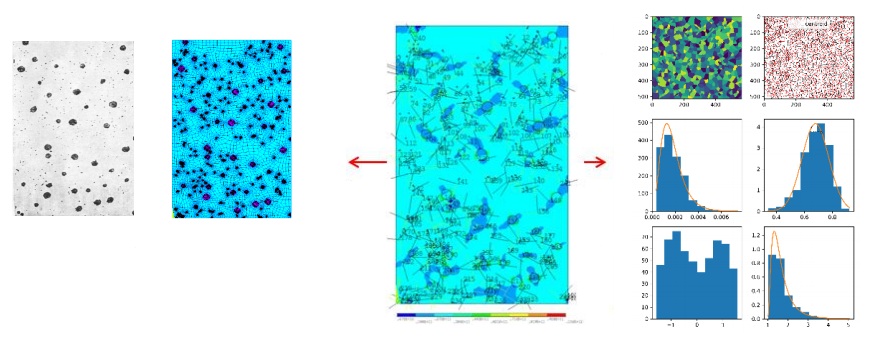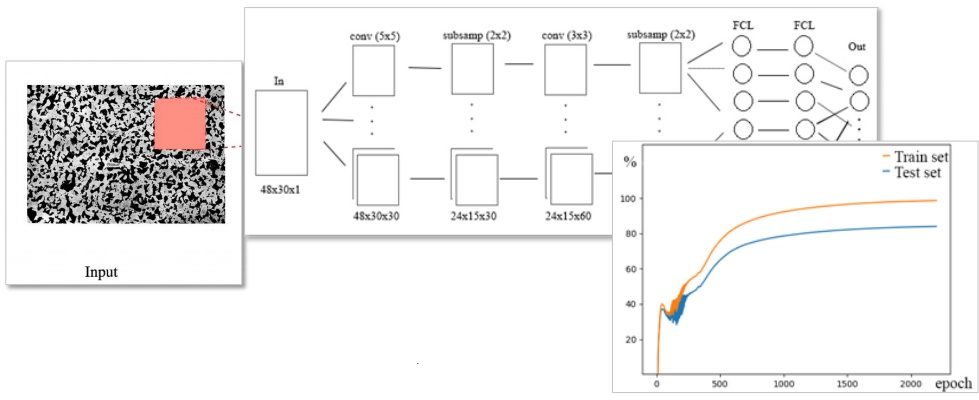Computational analysis and synthesis of complex materials
Development of methods for designing functional anisotropic composite materials
Composite materials are widely used in various fields of modern technology due to the fact that their physical and mechanical properties allow to significantly improving the technical characteristics of products. A distinctive feature of technological processes of manufacturing elements of structures from composites is the simultaneity of creating material and a product. The change in the structure of the reinforcement makes it possible to change in the desired direction the anisotropy parameters of the stiffness, strength, and thermal-physical properties of the composite materials.
The control of anisotropy of complex modules of polymer composite materials will increase the vibrational stability of structures and create effective noise-absorbing materials. The creation of new materials with a given anisotropy of the properties of heat conductivity is necessary to improve the thermal insulation coatings of buildings and structures.

Novelty and benefits. New methods are being created for designing composite materials with the required parameters for the anisotropy of physical properties based on the combined use of numerical methods for analyzing the stressed state of structural elements and numerical methods for homogenization of composites.
Outlook and perspectives. The design of composites with the required anisotropy of mechanical properties is actually in the manufacture of industrial wind turbine blades, elements of aircraft, and space engineering structures. The creation of new materials with a given anisotropy of the properties of heat conductivity is necessary to improve the thermal insulation coatings of buildings and structures.
IT for the analysis and synthesis of the structure of new materials for prediction of their physical properties
Modeling the mechanical behavior of materials at the micro level allows predicting the properties of the material at the macro level. This allows to significantly reducing the cost of testing, which is necessary to determine the mechanical properties. This is especially true for high cycle fatigue and creep testing. Computer simulation and modern information technologies allow virtually generate microstructures of materials and analyze their mechanical behavior. The most popular ways to virtually generate microstructures are the methods of cellular automata and the Voronoi tessellation. On the other hand, an important direction is the analysis of already existing microstructures and their properties.
Outlook and perspectives. Today, work is being done on the modeling of simple materials; in the future, new, complex materials are of great interest.

Image microstructure estimation algorithm of heterogeneous materials for identification their chemical composition
Main objective — convolutional neural network (CNN) creation for definition of heterogeneous materials chemical composition: to create the database of images and percentage of the chemical elements corresponding to material; to develop an image recognition algorithm through programming of neural network; to estimate the received system.

Outlook and perspectives. Today, work is being done on the modeling of simple materials; in the future, new, complex materials are of great interest.
Oleksiy Larin – Director of Institute Of Education and Science In Engineering and Physics – Professor, Doctor of Technical Sciences: oleksiy.larin@khpi.edu.ua
Olena Slipchenko – Director of European Educational Scientific Technological Center – Ph.D. in technical sciences, Senior Researcher: Olena.Slipchenko@khpi.edu.ua
